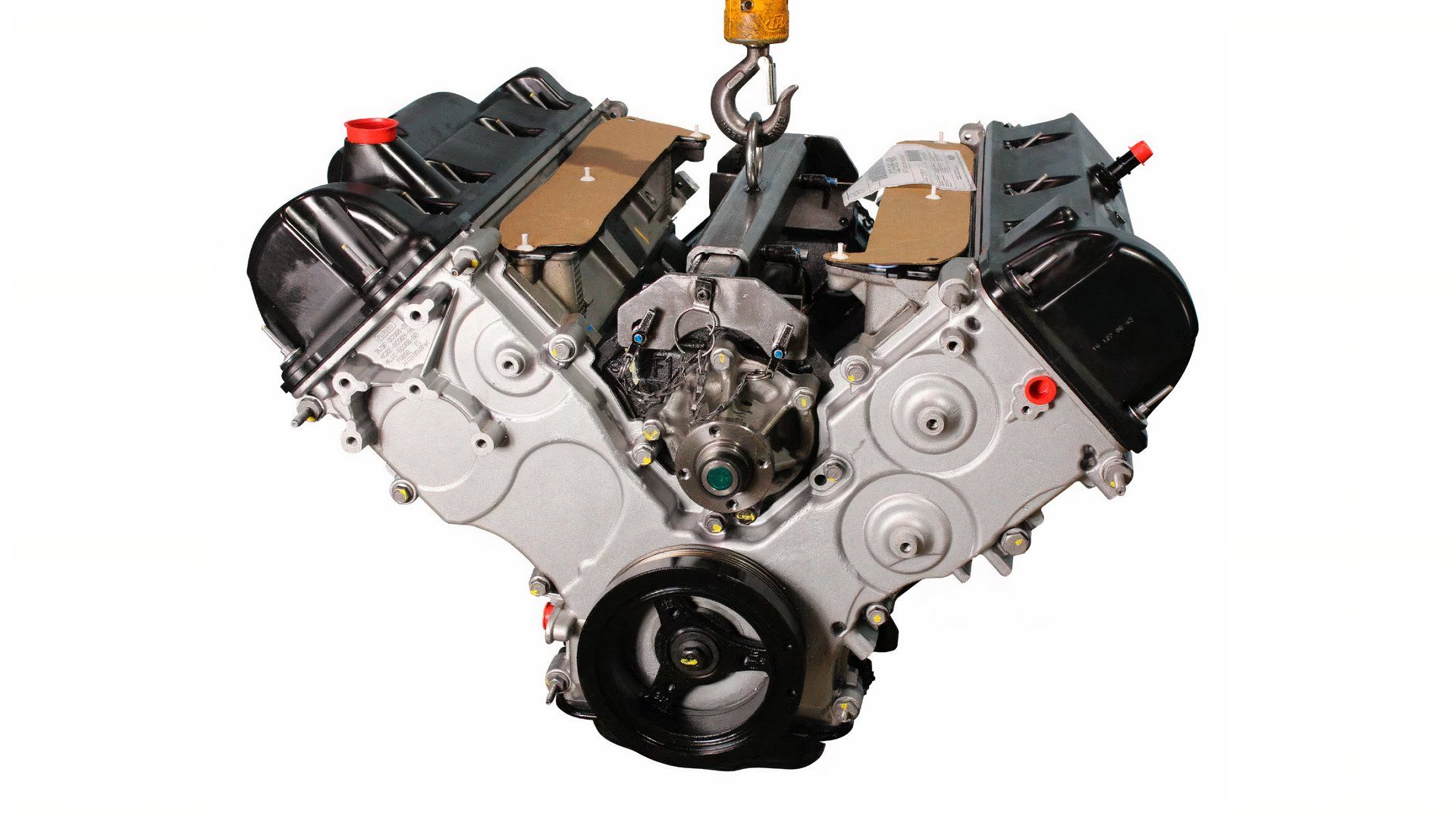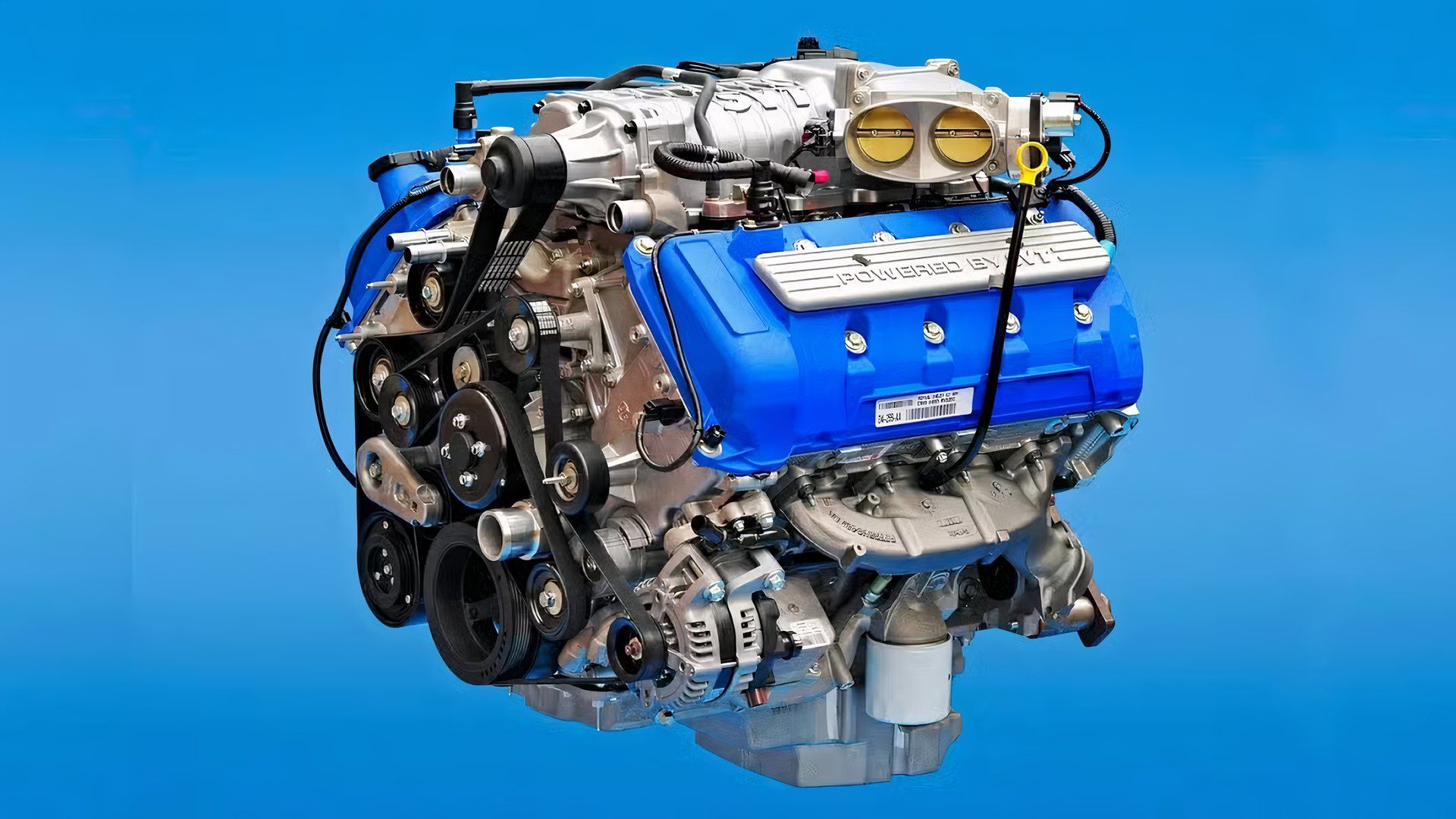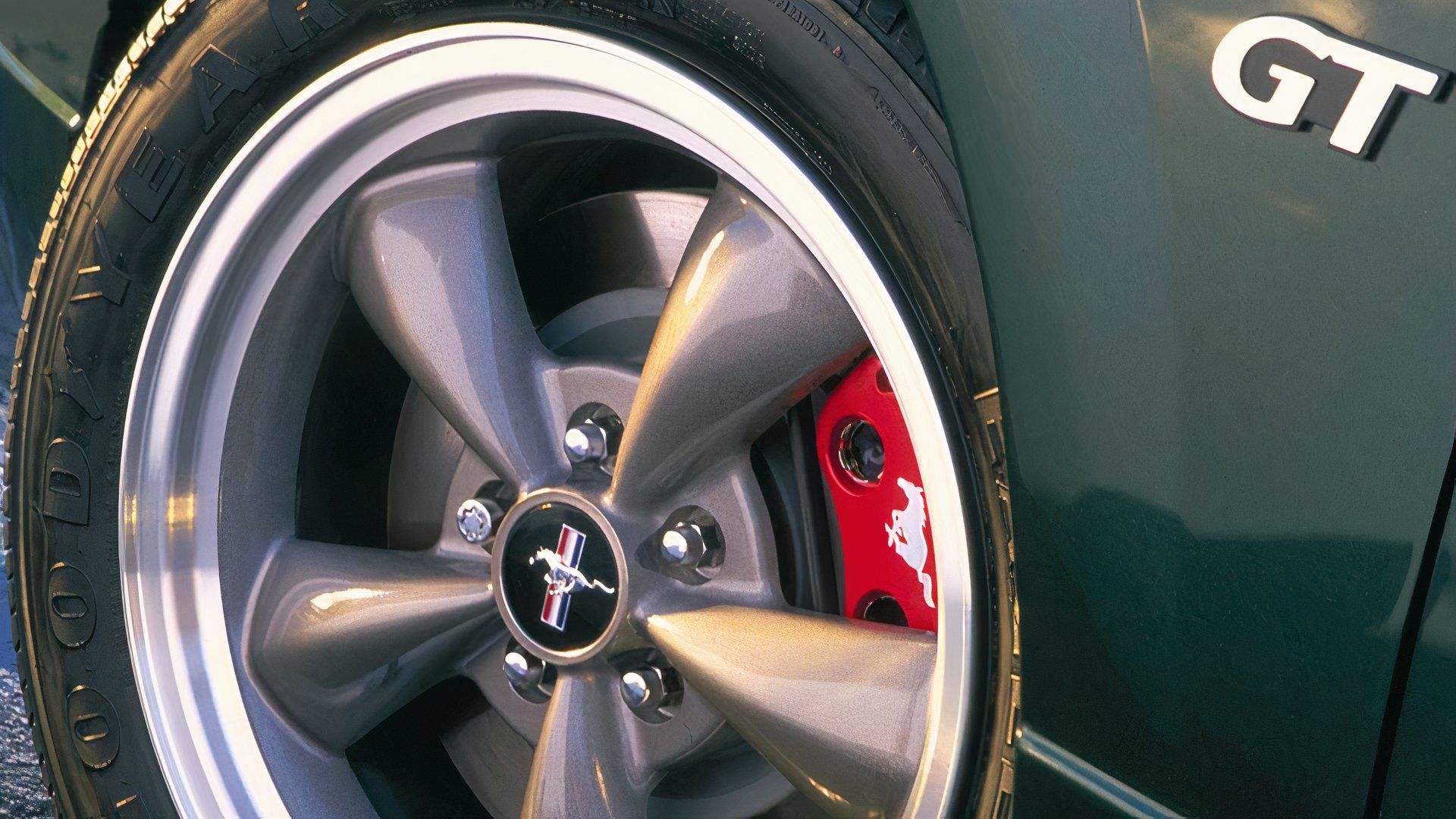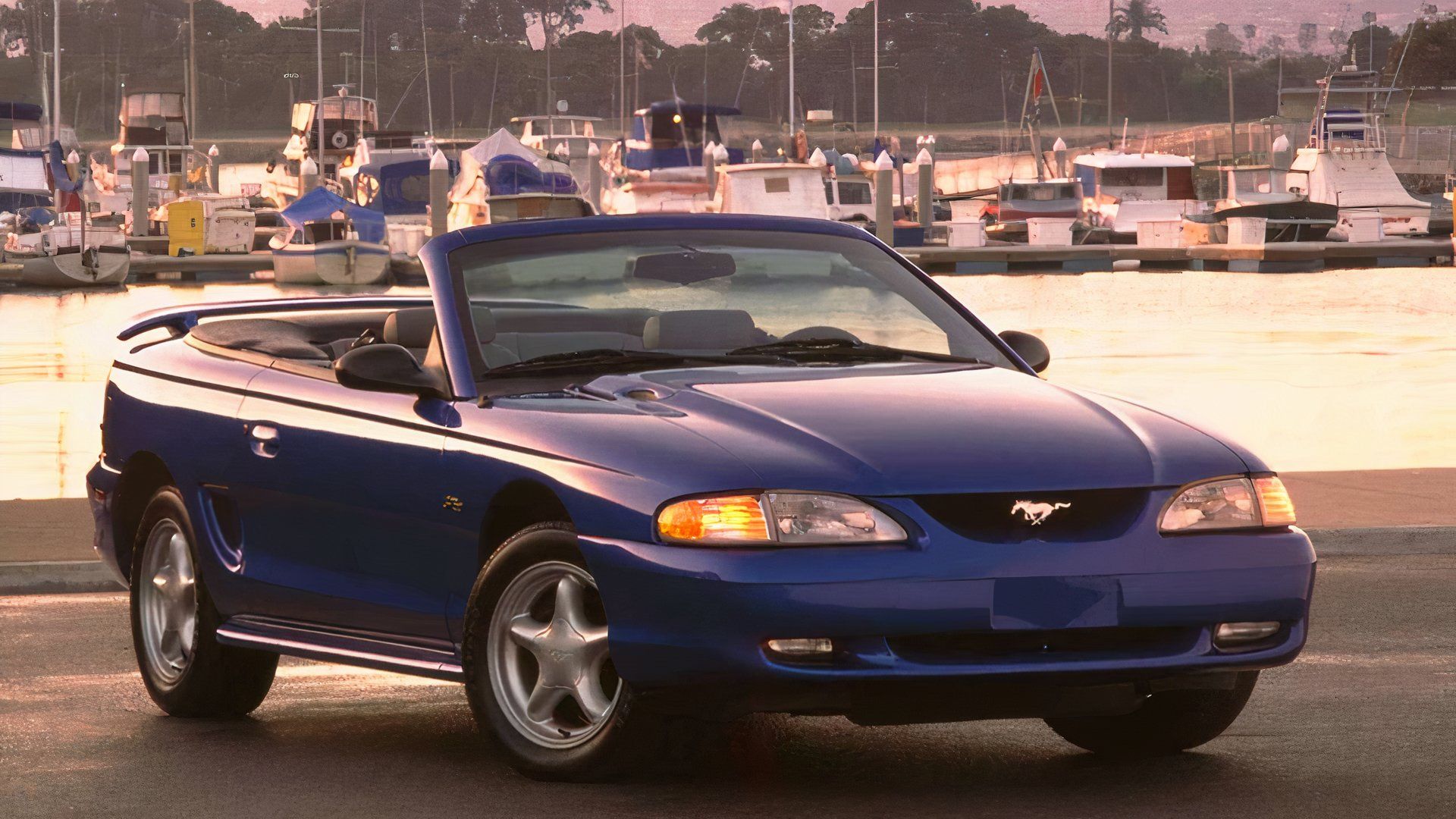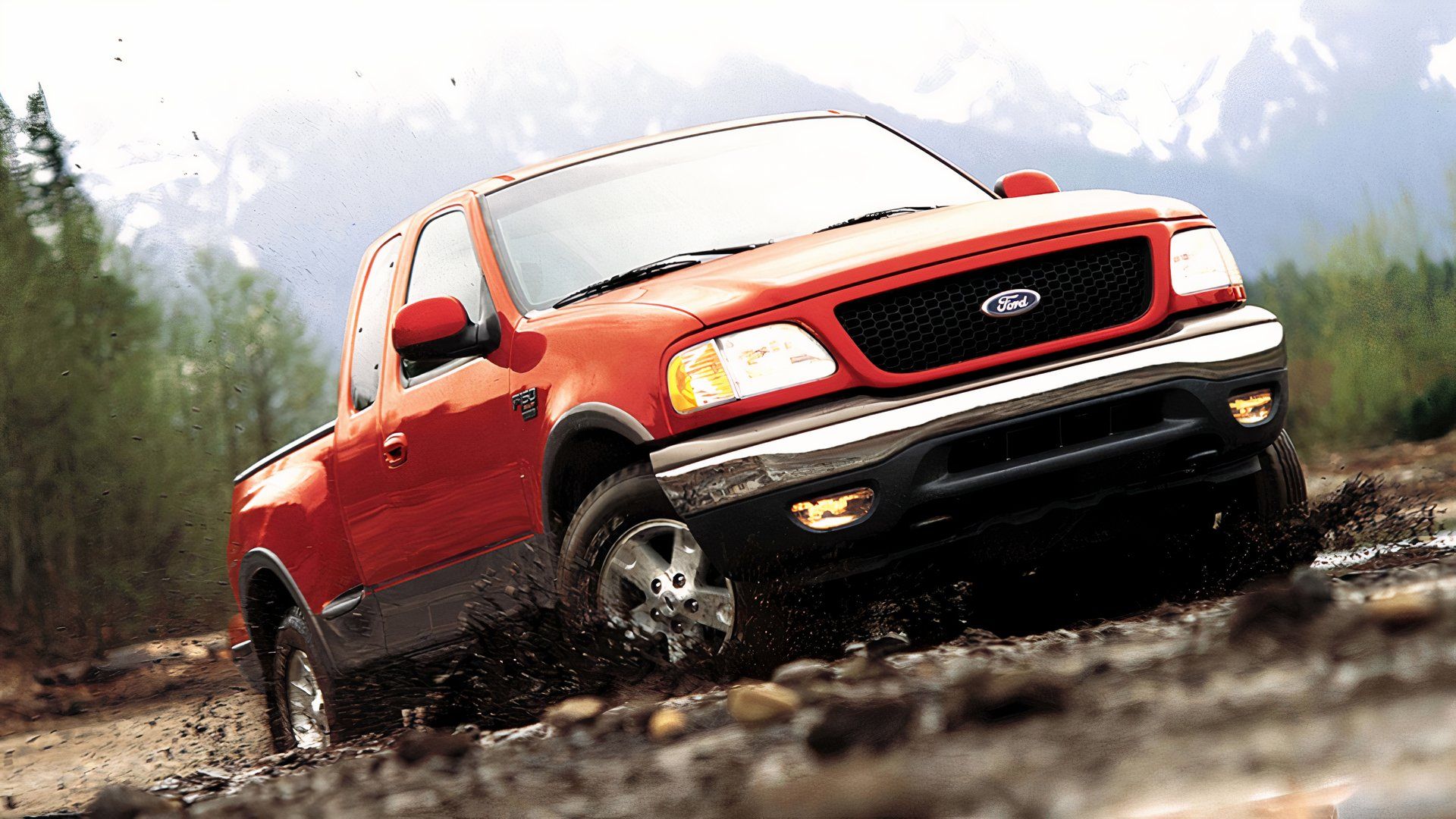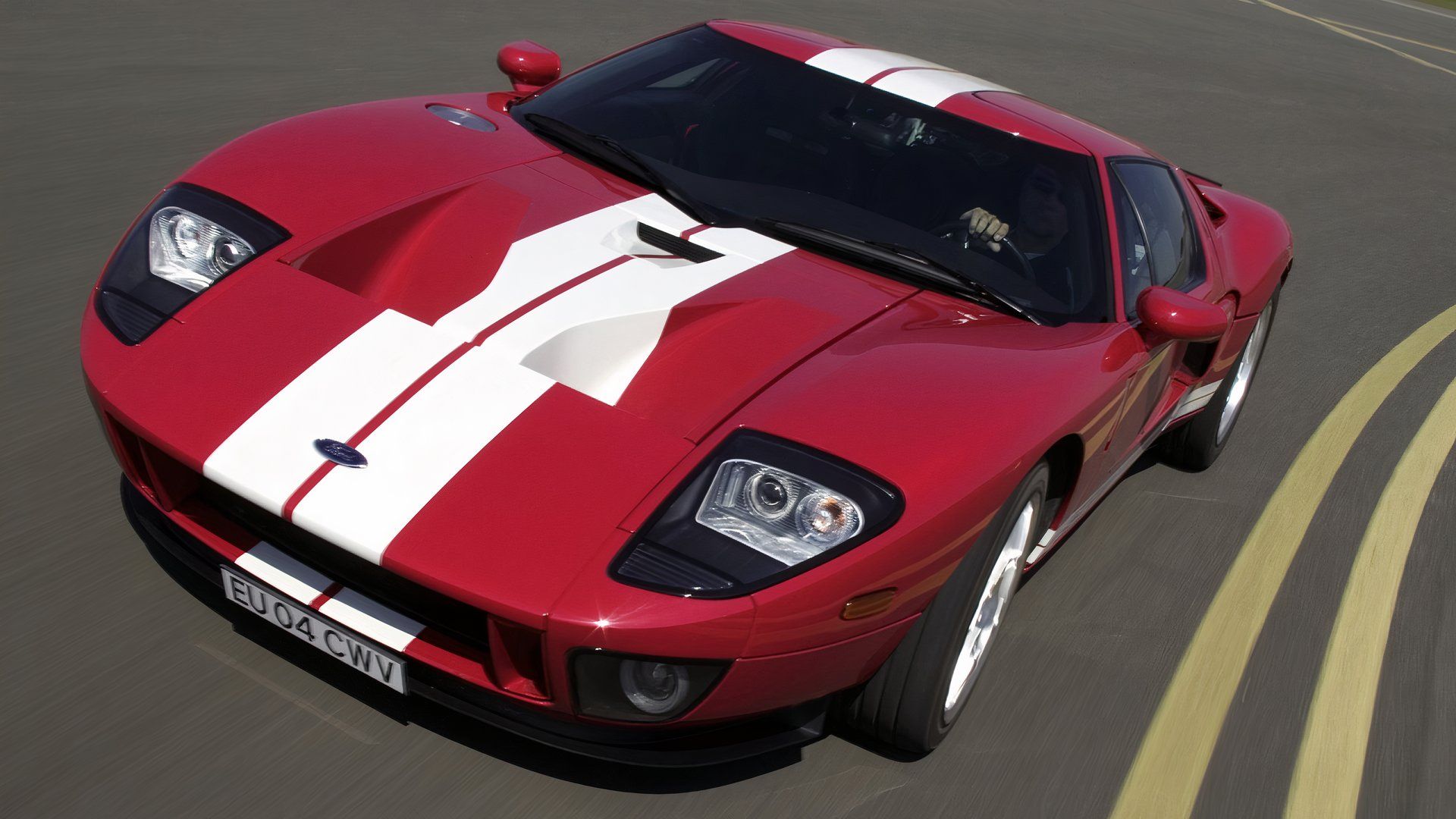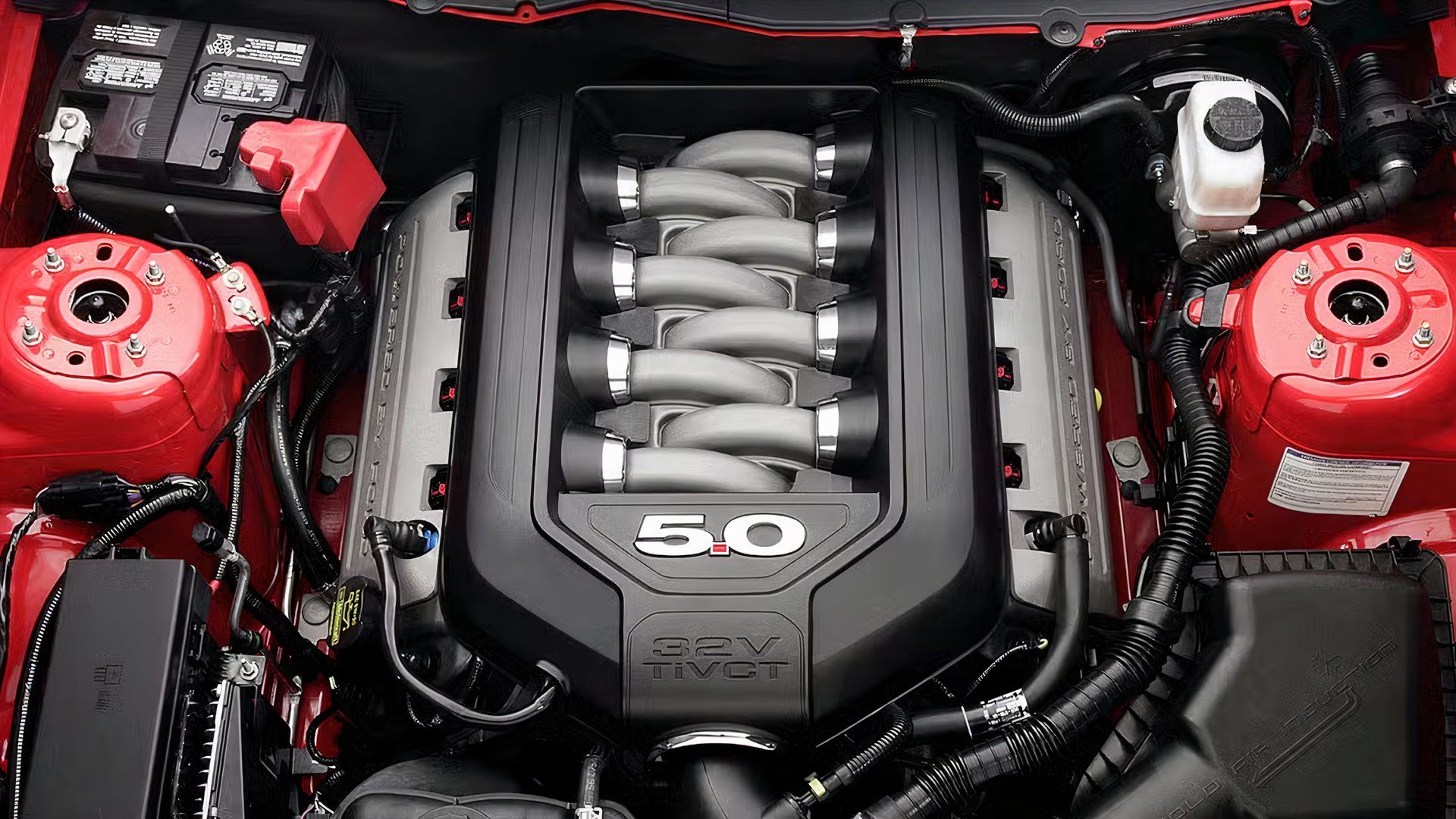[ad_1]
When the key turns in the ignition of a fourth-gen Ford Mustang GT – depending on the model year – one of two V8 engines under the hood, from 1994-1996, it was a familiar old 5.0-liter pushrod (OHV) V8 that deserves its own deep dive. In 1996, another engine was fitted: the ‘Modular’ V8. Ford’s modular 4.6 isn’t just different from the old Windsor engine, it is also part of a larger family and greater legacy that continues today.
The modular engine also won the annual Wards 10 Best Engines awards more than any other V8 – a total of 12 times (split between the 4.6-liter and the 5.4-liter variants). Other icons such as the Chevrolet small block or the Chrysler Hemi might have a better knack for stealing the limelight. Still, in this short feature, we’ll give homage to the reliable and innovative modular engine family that powered a huge variety of Fords, Mercurys, Lincolns, and much more.
Specifications are courtesy of the manufacturer or trusted sources, including Hagerty, J.D Power, Edmunds, and Hemmings, while any average values quoted are courtesy of Classic.com and Hagerty.
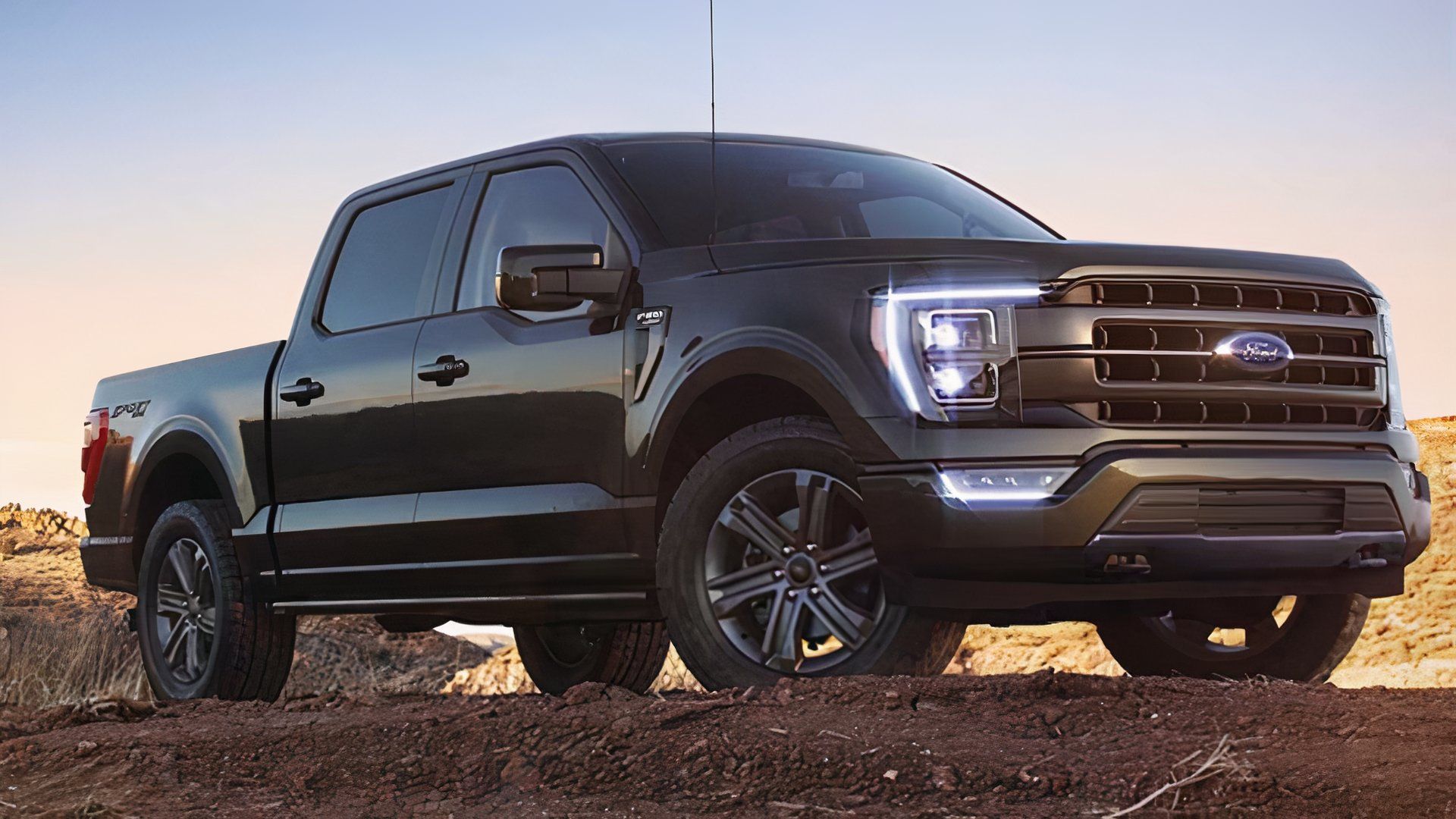
Related
Need Help Buying A Work Truck: Is The 4.6 Ford V8 A Bad Engine?
If somebody needs an emergency work truck from Ford but isn’t too sure about the 4.6 V8 engine, what do you tell them? This person’s mechanic told him to steer clear from F-150s with this engine type because of broken spark plugs, but does that have any merit? Does anyone have a similar experience with these 4.6-liter configurations?
A Brief Background Of The Ford Modular Engine
Ford’s modular V8 was designed to be able to accomplish various goals when it was being drawn up. Taking over from the aging Windsor small blocks (Windsor was the production site), the engines first needed to surpass the old engines when it came to power, efficiency, emissions, and refinement. The new design would also need to be adaptable to different applications and, importantly, be easy to package under a sleek, aerodynamic hood if necessary.

Add TopSpeed to your Google News feed.
The result was a modular design that wouldn’t require substantial retooling for the different variants, and the new engine would be superior in many ways. One of the biggest changes was the move to a single overhead camshaft (SOHC) design. This is a big upgrade over the OHV design from the outgoing Windsor engines and resulted in many gains, a move that was inspired by what other manufacturers such as the Japanese were already doing.
Features And Highlights Of The Modular Engine
- Modular design that allows for the production of various engines in the same factory without retooling
- Interchangeability of blocks and many parts between 4.6-liter and 5.4-liter, and even 6.8-liter V10 engines
- Optimized fuel efficiency through relatively small displacement
- Weight optimization, which included aluminum heads
- All engines employed an overhead camshaft setup with a timing chain design
- The 4.6-liter V8 debuted in the 1991 Lincoln Town Car
- Various heads were used which enabled two, three, and four-valve versions of the modular engine
- Despite beginning production in 1990, the modular engine is still going today thanks to the Coyote derivative
Differences Between The Modular V8 And The Windsor V8
The Pushrod And Overhead Cam Designs
There were many differences between Ford’s Windsor and modular engines. The biggest change was arguably the shift from a pushrod design to an overhead cam. Pushrod engines like the Windsor have benefits including more torque at lower engine rpm, a lower center of gravity thanks to the camshaft being located lower down in the engine block, and relatively compact packaging. Since the camshaft isn’t sitting on top of the engine, the OHV valve design means the physical height of the engine is lower. The design also has fewer moving parts.
An overhead camshaft is the opposite in many ways, with the ability to make more power at higher rpm, at the expense of a larger, more complicated engine. This design works well for integrating more valves into the valvetrain, which increases performance and improves fuel economy.
More Power On The Table
The use of multiple-valve technology (multiple intake and exhaust valves for each cylinder), the use of variable valve timing systems, and the switch to an overhead cam system all worked their magic on the modular family. Power for the naturally-aspirated Coyote engine in 2025 is up to 500 horsepower for the Ford Mustang Dark Horse. While the outgoing Windsor 5.0-liter in the 1995 Ford Mustang GT made the same power as the new 4.6-liter modular V8, this was only the beginning.
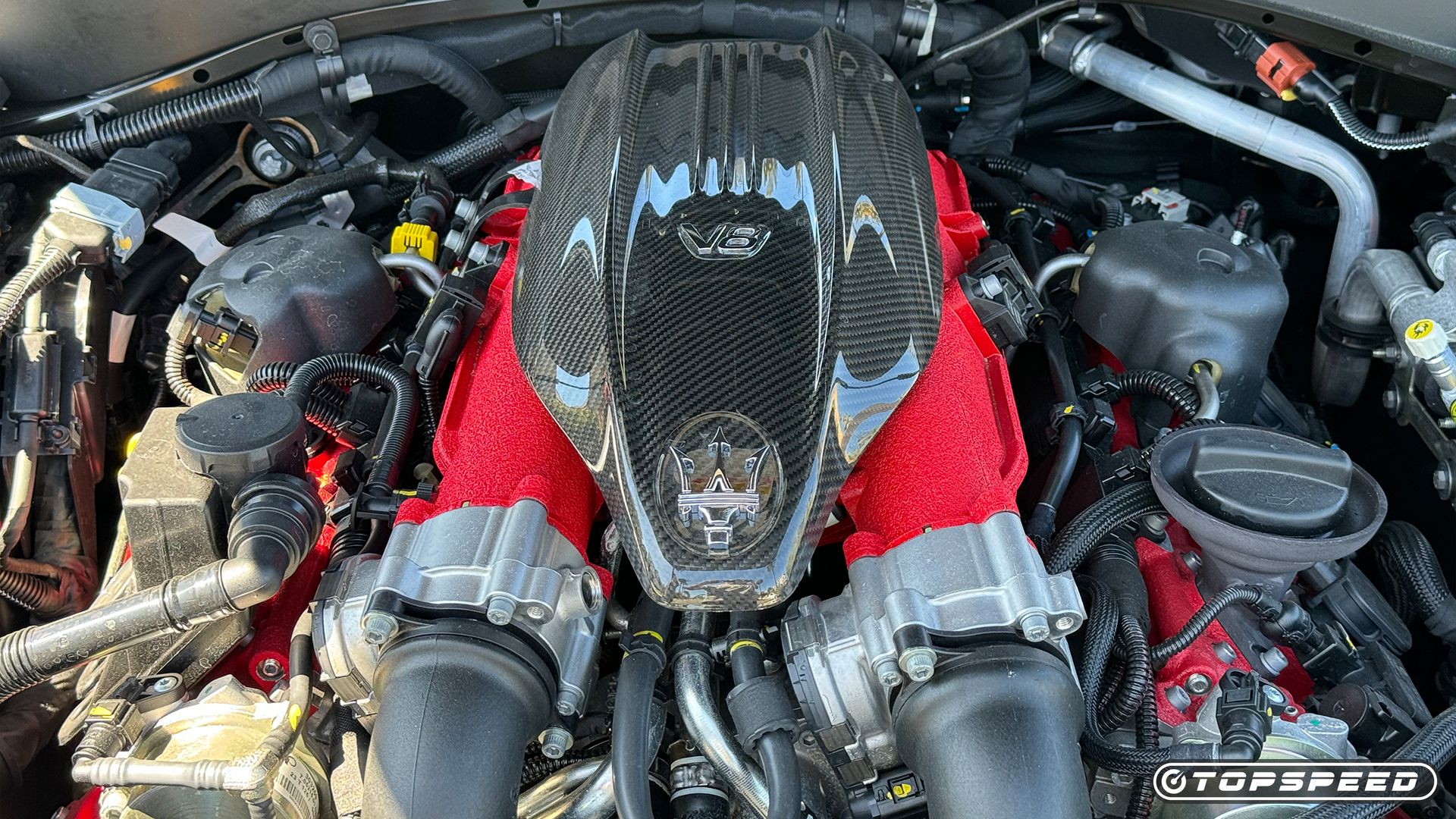
Related
Here’s Why The V8 Engine Is Still King In A Downsizing World
Today where downsizing and electrification dominate headlines, the V8 engine continues to hold a special place in the heart of car enthusiasts.
The Ford Modular V8’s Specifications At A Glance
Ford Modular Engine Variants: Specs
|
4.6 |
5.4 |
5.8 |
6.8 (2-valve) |
5.0 (Coyote) |
5.2 (Voodoo) |
5.2 (Predator) |
|
|---|---|---|---|---|---|---|---|
|
Engine format |
4.6-liter, NA V8 |
5.4-liter, NA V8 |
5.8-liter, NA V8 |
6.8-liter, NA V10 |
5.0-liter, NA V8 |
5.2-liter, NA V8 |
5.2-liter, supercharged V8 |
|
Power |
215 hp |
220 hp |
662 hp |
305 hp |
412 hp |
526 hp |
760 hp |
|
Torque |
285 lb-ft |
280 lb-ft |
631 lb-ft |
420 lb-ft |
390 lb-ft |
429 lb-ft |
625 lb-ft |
|
Example model |
Fourth-gen Ford Mustang GT |
Tenth-gen Ford F-150 |
2013 Ford Shelby Mustang GT500 |
Ford Super Duty |
Fifth-gen Ford Mustang GT (from 2011) |
2015 Ford Shelby Mustang GT350 |
2020 Ford Shelby Mustang GT500 |
Power and torque figures for listed model – specs vary based on application
There were two core variants of the modular family – the 4.6-liter and 5.4-liter versions, with varying valve configurations. In addition, the 6.8-liter V10 was created, which could still be produced alongside the eight-cylinder versions in the same facility. The 5.8-liter engine (called the Trinity) was a supercharged version used for the 2013 Shelby GT500 only.
Later on, the Coyote was another evolution of the modular engine family, with a slightly larger capacity, designed to take on the larger engines from Chevy and Dodge, while retaining the modular engines’ ease of production and compact packaging. The result is the 5.0-liter Coyote that appeared in the fifth-gen Mustang after the 2010 refresh. This was the basis for the later Voodo and the supercharged Predator engines. The Coyote has been updated but continues today, sharing many characteristics with the 4.6-liter modular engine but with modern features such as Ford’s variable valve timing (Ti-VCT) system.
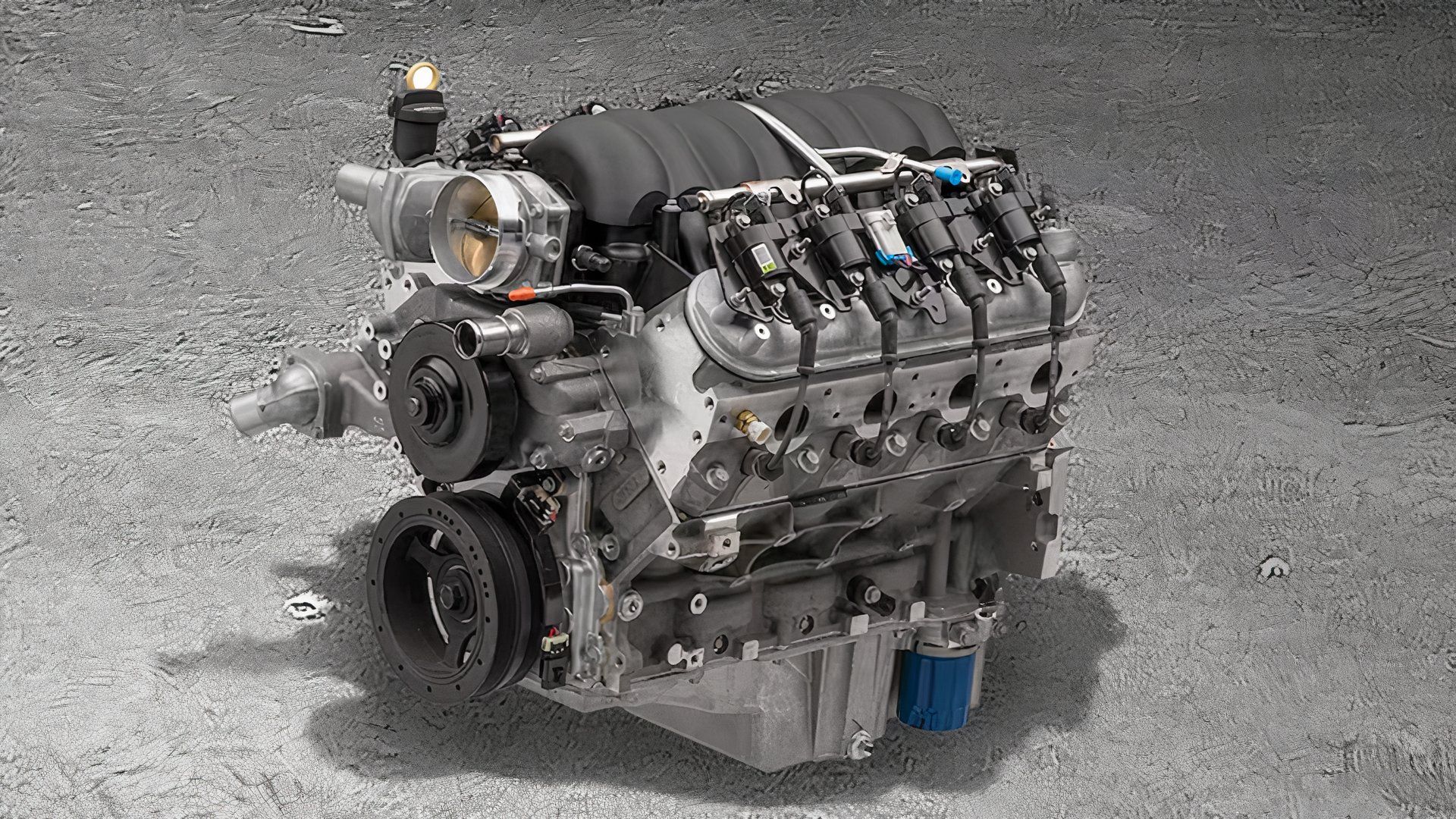
Related
This Chevrolet Engine Broke The Mold Without Breaking The Bank
The legendary Chevy V8 that went on to change the world – now it’s one of the cheapest ways to add horsepower to any build.
Iconic Models That Used The Ford Modular V8
Arguably the most impressive thing about the modular V8 family is the breadth of applications and configurations that were available. Thanks to the array of displacements and setups, the engine was used successfully in both the Mustang pony car and the F-150 pickup. It was also used in the Ford GT supercar (also below) and luxury cars like the Lincoln Town Car. In its hottest form, the 5.4-liter engine was supercharged.
SN95/New Edge Ford Mustang GT: 1996-2004
The fourth-generation Mustang GT received the 4.6-liter modular engine in 1996, two years after the SN95 first arrived. It replaced the 5.0-liter OHV engine and, despite its 400-cc reduction in displacement, made the same advertised power: 215 horsepower / 285 pound-feet. The modular V8 always used two valves per cylinder, while special versions such as the SVT Cobra used a four-valve setup. This engine was carried over to the S197 Mustang GT, with a three-valve setup that made 300 horsepower / 320 pound-feet. It would be succeeded by the 5.0-liter Coyote in 2011.
Tenth-Gen Ford F-150: 1997-2004
Ford’s long-running, hard-working half-ton pickup truck acquired the tenth-generation modular engine, replacing the previous 5.0-liter and 5.8-liter Windsor OHV V8s. The new 4.6-liter and 5.4-liter mills went by the ‘Triton’ brand name, which Ford used for commercial vehicles and trucks. For the 4.6-liter engine, power ran from 220-231 horsepower and torque 280-293 pound-feet. The 5.4-liter Triton made 235–260 horsepower and 330–350 horsepower, while Ford’s SVT Lightning added a supercharger to the same engine for 360 horsepower / 440-pound-feet. The modular engines would continue through the eleventh and twelfth generations of the F-150.
First-Generation Ford GT
The potential of the modular V8 could extend as far as being a supercar engine, for the Ford GT. It utilized the 5.4-liter V8 in supercharged form for an incredible 550 horsepower and 500 pound-feet. Ford fitted the 5.4 with heads that were broadly similar to the 2000 Mustang SVT Cobra R; a four-valve head design. A dry sump oiling system was also used for a lower engine installation.
Fast-forward to the second generation 2017 GT and Ford instead chose the 3.5-liter, twin-turbo EcoBoost V6 for its compact design and high output (647 horsepower / 550 pound-feet). The manual transmission was also sadly lost for the second-gen Ford GT. Either way, the first-gen Ford GT was a great example of how broad the applications of the modular V8 family were.
The Modular Engine’s Legacy
There is much more to be said about the modular engine. Its 4.6-liter and 5.4-liter variants no longer feature in new models but continue to power the vehicles on the used market. A modular-equipped car or truck is still said to be reliable and strong. The modular family still continues on though, thanks to the Coyote. Ford’s Coyote V8 is a 5.0-liter evolution of the modular V8. Designed to compete with V8s such as those from Chevrolet which were much bigger (6.2 liters), the Coyote still needed to be compatible with existing tooling but make more power to be competitive.
The result is an engine with more power than the 4.6 and 5.4-liter modular units, but one that shares their bore spacing, deck height, and other characteristics. It’s an impressive design, and one that laid the way for the related Voodoo and Predator engines. Now, the Coyote is in its fourth generation and time will tell whether it’s to be the last installment or just another chapter in the modular family’s legacy.
[ad_2]
Source link


